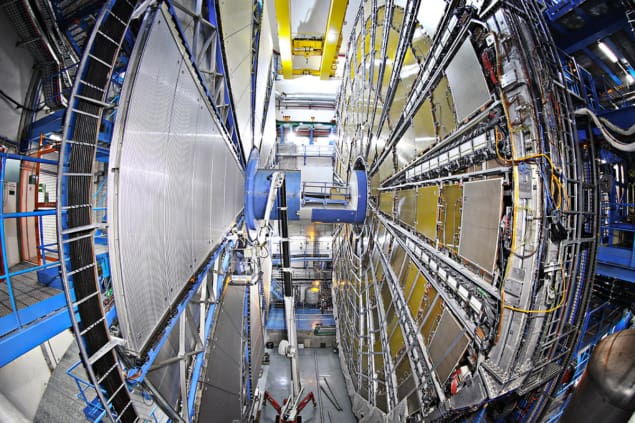High-precision measurement of the strong force is made at CERN

In a thorough review of proton collision data from CERN’s Large Hadron Collider (LHC), physicists working on the ATLAS experiment have determined the strength of the strong force to the highest level of precision to date. While the result is in agreement with the Standard Model of particle physics, the approach could be used to search for new physics in future experiments.
As defined by quantum chromodynamics (QCD), the strong force is responsible for the binding of quarks together via exchanges of massless gluons. The strong force also holds protons and neutrons together in nuclei.
The strong force differs from gravity, the electromagnetic interaction and the weak force because it does not diminish as particles move apart. This imbues a complexity to QCD that makes it very difficult to determine the strong coupling constant. As a result, the strong force is the least precisely defined out of the four fundamental forces in the Standard Model.
Through a combination of refined QCD theories and improved experimental techniques, our understanding of the strength of this interaction – defined by its coupling constant – has steadily improved over the past few decades.
Key parameter
“The strength of the strong nuclear force is a key parameter of the Standard Model, yet it is only known with percent-level precision,†explains Stefano Camarda, a CERN-based member of the ATLAS Collaboration. “For comparison, the electromagnetic force, which is 15 times weaker than the strong force at the energy probed by the LHC, is known with a precision better than one part in a billion.â€
To boost our understanding of the strong force, the ATLAS team has now revisited data collected by the LHC in 2012, when beams of protons collided head-on inside the ATLAS detector at energies of 8 TeV.
During these collisions, quarks in protons were occasionally annihilated by their antiquark counterparts in the opposing beam. This process is mediated by the weak interaction, leading to the creation of massive, neutral Z-bosons.
During the collisions, gluons radiated off the annihilating quarks boost the momentum of the resulting Z-boson along the collision axis. Crucially, QCD predicts that the magnitude of this momentum kick is tied to the value of the strong coupling constant.
More stable pairs
Shortly after their appearance, the Z-bosons decayed further into more stable pairs of either electrons and positrons, or muons and antimuons – which were subsequently picked up by ATLAS’ detectors. In their latest analysis, the ATLAS collaboration identified more than 15 million of these pairs. These observations allowed them to calculate the momenta of the Z-bosons that created them.
By comparing these values with theoretical predictions calculated by only considering the weak interaction, the researchers could determine the extent of the strong interaction’s influence on the process.

Quantum computers take on quarks
This means that the ATLAS team has measured the strong coupling constant to the highest level of precision achieved in any experiment to date. “That we have now measured the strong force coupling strength at the 0.8% precision level is a spectacular achievement,†Camarda says. “It showcases the power of the LHC and the ATLAS experiment to push the precision frontier and enhance our understanding of nature.â€
While this is a great experimental achievement, it does not appear to put us any closer to physics beyond the Standard Model. The team’s value for the strong coupling constant agrees closely both with previous, less precise measurements, and with the latest QCD predictions. So this is yet another case of the Standard Model standing firm against close scrutiny.
However, if the same approach is used to analyse even higher-energy collisions in the future, researchers could be better placed to pick out discrepancies in the Standard Model’s predictions. Perhaps this could get us a step closer to answering some of the most long-standing questions surrounding the fundamental nature of matter.
The research is described in a preprint on arXiv.




